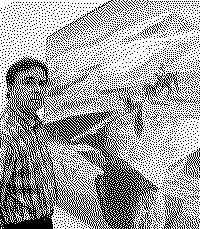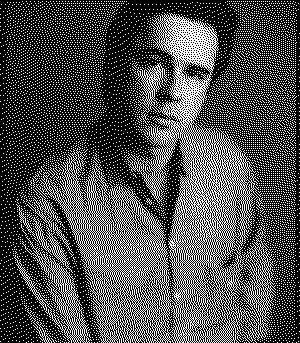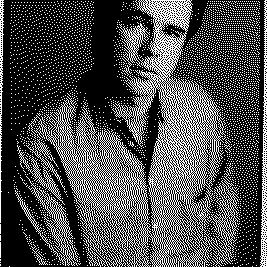Artists/Mark Tansey
Fast Facts
Monochromatic Paintings
Tansey is known for his monochromatic paintings, often using a limited palette of colors, primarily shades of blue or sepia. His works are characterized by their detailed, almost photographic realism.
Conceptual and Narrative Elements
His paintings are rich in narrative and conceptual depth, often featuring historical or literary references. Tansey's art frequently explores the relationships between perception, language, and meaning.
Interplay of Realism and Irony
While his technique is rooted in realism, his subject matter often incorporates ironic or paradoxical elements, playing with ideas of reality and representation.
Philosophical and Art Historical References
Tansey’s works are replete with allusions to philosophical ideas and art history, engaging viewers in a dialogue about the nature of art, perception, and knowledge.
Biography



Mark Tansey is a distinguished American artist known for his monochromatic paintings that intricately blend historical references with modern conceptual art themes.
Born in 1949 in San Jose, California, Tansey was introduced to art at a young age by his father, an art historian. This early exposure played a significant role in shaping his artistic pursuits. Tansey's educational journey took him to the Art Center College of Design in Los Angeles and later to the Graduate Center at Hunter College in New York City, where he further developed his unique style and approach to art (Sothebys.com).
In the 1980s, Tansey began crafting his signature style, which is characterized by monochromatic, photo-inspired paintings. This period marked a significant evolution in his career, with his works gaining recognition and being acquired by prestigious institutions such as the Metropolitan Museum of Art. Tansey's process involves collaging various source images, sometimes altering them to fit his vision, and then meticulously painting over them to create scenes that combine the familiar with the surreal. His works often begin as collages of photographic reproductions and magazine clippings, evolving through sketches and drawings before culminating in the final painting. Tansey is known for his methodical approach to art, using gesso-covered canvases as his base and applying monochromatic paint in layers. This technique allows him to achieve a depth of detail and precision that has been widely praised (Wikipedia).
Tansey's art is more than just visually striking; it delves into themes of representation, reality, and the multifaceted nature of perception. His paintings, at first glance, appear to depict straightforward scenes but reveal layers of complexity and quirkiness upon closer examination. This duality challenges viewers to reconsider their interpretations of art and reality. Tansey draws inspiration from Surrealism, particularly the work of René Magritte, which is evident in the thought-provoking and often humorous content of his paintings (Sothebys.com).
Despite his critical success, Tansey's work has also faced criticism, particularly for its consistent themes, style, and humor, which some have perceived as an oversimplification of complex issues. Nevertheless, his contributions to the art world are undeniable, with his works held in several prestigious public collections, including the Los Angeles County Museum of Art, the Museum of Modern Art in New York, the Whitney Museum of American Art, and the Smithsonian American Art Museum (Wikipedia) (Sothebys.com).
Today, Mark Tansey continues to live and work between New York City and Portsmouth, Rhode Island, maintaining a relatively low output due to his meticulous painting process, producing roughly one painting every two years. His approach to art remains deeply analytical and reflective, inviting viewers to engage with his works on multiple levels (Sothebys.com).
Importance
Mark Tansey's significance in the art world is profound and layered, reflecting his unique approach to painting, historical narrative, and conceptual exploration.
Pioneering Conceptual Realism
Tansey challenges traditional realism by blending it with conceptual art. His paintings, while monochromatic and possessing near-photographic precision, introduce surreal tableaux that reimagine historical narratives and engage with philosophical questions, bridging the gap between representational art and conceptual depth (Gagosian) (Crystal Bridges).
Innovative Use of Historical and Artistic References
Growing up in an environment steeped in art history, Tansey developed a vast mental database of visual references. His work often lifts motifs from historical paintings or features important artists and philosophers, creating complex allegories that delve into the meaning of art and the impulse to create images. This approach allows his works to serve as dramatic stages where theories about art's nature are both questioned and celebrated (Gagosian) (The Broad).
Subversive Commentary on Art and Perception
Tansey's paintings engage in a playful yet subversive commentary on the perception and meaning of art. By manipulating figurative painting's conventions and structures, he constructs visual allegories that reflect on literary, philosophical, and historical concepts, often incorporating visual puns and quirks that invite closer scrutiny from viewers (Wikipedia).
Technique and Process
Tansey's unique subtractive painting process involves priming canvases with white gesso, then carefully removing layers of monochromatic paint to reveal the canvas beneath. This method, combined with his detailed preparatory work involving sketches, collages, and collected ephemera, results in images that are both precise and rich in detail. Tansey's meticulous attention to his artistic process underscores the depth of his engagement with his subjects and themes (Gagosian) (Crystal Bridges).
Impact on Contemporary Art
Despite facing criticism for the consistency of his themes and style, Tansey's contributions have had a lasting influence on contemporary art. His works are included in major collections and have been the subject of significant exhibitions worldwide. His ability to weave together narrative depth, historical reference, and conceptual inquiry has positioned him as a critical figure in the discussions surrounding the possibilities and directions of modern and contemporary painting (Wikipedia).
Technique
Mark Tansey's artistic technique is characterized by its originality, depth, and meticulous approach, which contribute significantly to his distinctive style and thematic exploration.
Monochromatic Palette and Photographic Precision
Tansey's paintings are known for their monochromatic palette, often executed in shades of blue or gray, which contributes to their near-photographic precision. This choice of a limited color scheme focuses attention on the subject matter and the narrative intricacies of his work, allowing viewers to engage deeply with the underlying themes (Gagosian).
Subtractive Painting Process
A hallmark of Tansey's technique is his subtractive painting method. He starts with a canvas primed with white gesso, then applies monochromatic paint over it. By carefully removing layers of paint, Tansey reveals varying degrees of the white canvas beneath, creating depth and detail. This process is analogous to carving an image out of the painted surface, requiring precision and planning to achieve the desired effect (Gagosian) (Crystal Bridges).
Use of Collage and Photocopying in Preparatory Work
Before painting, Tansey engages in an elaborate preparatory process that includes making collages from various source materials, such as photographs, magazine clippings, and historical images. He then photocopies these collages multiple times, adjusting density and contrast to refine the composition. This method allows him to explore different configurations and integrate an array of visual references into his paintings, contributing to their layered and allegorical nature (Crystal Bridges).
Intellectual Engagement with Subject Matter
Beyond his physical technique, Tansey's approach is deeply intellectual. He often incorporates historical, literary, and philosophical references into his work, using his extensive knowledge of art history to create complex narratives that invite reflection and interpretation. This aspect of his technique underscores the thematic depth of his paintings and his engagement with broader cultural and theoretical discussions (The Broad) (Wikipedia).
Detailed Planning and Execution
Tansey's paintings, characterized by their intricate detail and conceptual depth, are the result of a highly detailed planning process. He works from arrangements of sketches and collages, building up his compositions in stages to ensure that every element contributes to the overall narrative and thematic concerns of the piece. This meticulous attention to planning and execution highlights Tansey's commitment to the intellectual and aesthetic dimensions of his work (Gagosian).






